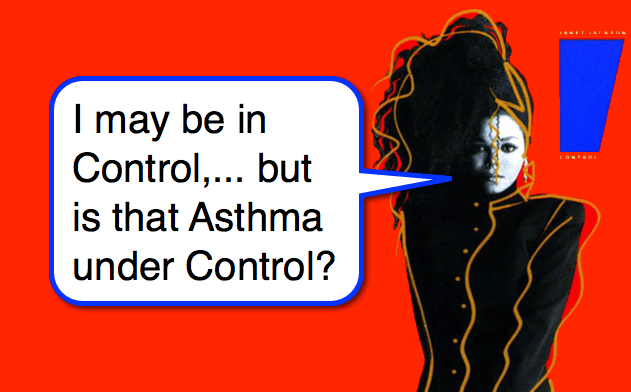Asthma Control
I know that everyone wants to discuss critical care topics like delayed sequence intubation, management of post-tonsillectomy hemorrhage, or damage control resuscitation. I agree, they are part of what makes Emergency Medicine exciting and provocative; however, the vast majority of what we do does not require you to know how to optimize chest compressions or manage a ventilator for an intubated asthmatic. In order to provide the best care for all of our patients and maximize the efficacy of all of our therapies, we need to know some “less exciting” topics that are never depicted on TV shows about the ED. Determining whether your patient’s Asthma Control is sufficient is an excellent example of this.
Asthma Burden
- 1 in 11 children have asthma (CDC)
- In 2010, 7 MILLION children had asthma in the US.
- In 2009, 1 in 5 children with asthma went to the ED for their care!!
- In North Carolina (and I am sure many others), many patients with asthma who use the ED do not identify a regular source of primary care. (Crane, 2011)
- The notion of “their primary care doc will follow up on that” is not realistic in many cases.
- Helping to optimize a patient’s management is ALL of our jobs.
- “It takes a village” is a better way to think of it.
Asthma Control
Aside from managing the acute exacerbation (which we have covered many aspects of in the past: ex, MDIs, Dexamethasone, Magnesium, Hydration Status), an important question is whether this patient’s asthma control is adequate. That brings us to the question of, what defines Asthma Control? (Bousquet, 2010)
-
Well Controlled
- Daytime symptoms: <2 or less days/week, but not more than once/day
- Nighttime symptoms: None
- Limitations of activities in past 2-4 wks: None
- Need for Rescue Rx in past month: 2 or less days/week
- Exacerbations requiring systemic steroids: 0-1 / year
-
Partially Controlled
- Daytime symptoms: >2 days/week, >Once/day
- Nighttime symptoms: 1-2 nights/week
- Limitations of activities in past 2-4 wks: Some
- Need for Rescue Rx in past month: >2 days/week
- Exacerbations requiring systemic steroids: 2 / year
-
Poorly Controlled
- Daytime symptoms: Throughout the day
- Nighttime symptoms: >2 nights/week
- Limitations of activities in past 2-4 wks: Extremely limited
- Need for Rescue Rx in past month: Several times a day
- Exacerbations requiring systemic steroids: >2 / year
Rule of 2’s
So, keeping the above characterizations in your mind might be challenging during a busy ED shift… so keep the Rule of 2’s stored in your cerebral cortex instead. (Singer, 2005)
- Over the past month, Inadequate Asthma Control is indicated by:
- Use of Rescue Inhaler 2 days/week
- Awakening w/ symptoms 2 times/month
- Use of 2 or more Rescue Inhalers (MDIs) / year
Why do you Care?
Yes, I understand that many do not believe that the ED is the place to discuss management strategies of chronic conditions. I disagree.
- The best time to get someone’s attention about their health is when they are not feeling well.
- It may be the only time that they actually get to see a doctor about their chronic condition.
- Determining whether their Asthma Control is inadequate and then starting an inhaled corticosteroid (or adjusting their current regimen) may be the best way to prevent that patient from having to come back to see you again in the ED. (It is a selfish endeavor really).




[…] common symptom in children. Certainly, we need to consider that an ominous cause may be lurking (Asthma, Occult Aspirated Foreign Body, Croup, Sinusitis, Pneumonia, Acute Chest Syndrome, etc.). Most […]
Decent way of presenting the blog. I like it!
Usmle
Tutor
I appreciate your feedback! Thank you!